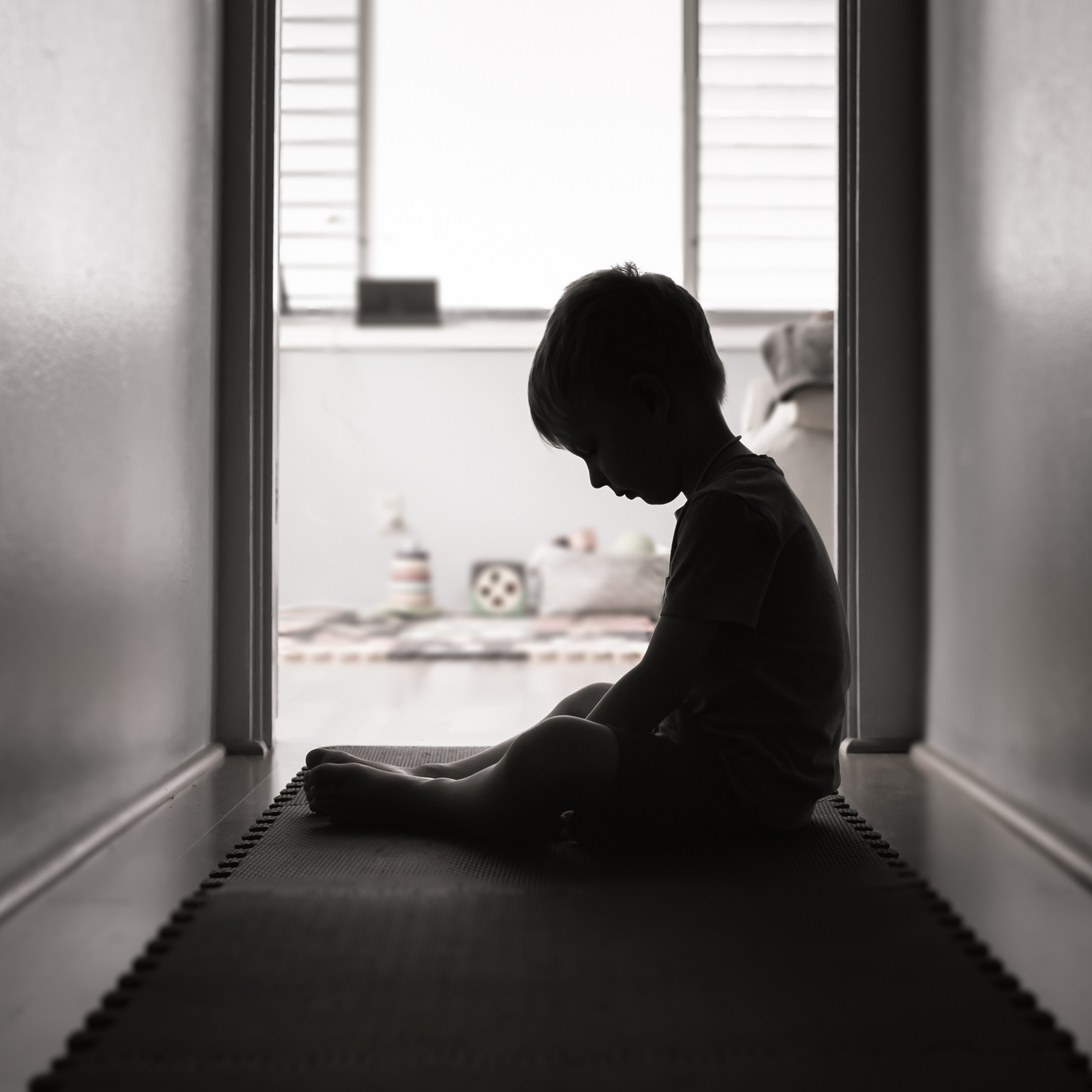School
8 min Read
How Does Play Help Regulate Child Anxiety?

March 8, 2023
School
8 min Read

March 8, 2023

If you’re wondering how to manage your anxious kid in the post-pandemic world of 2023, just let them play. We spoke with a child psychology expert about why this works and what parents can do to help.
In a recent poll headed by the LEGO Group (yes, that LEGO), out of 1,000 Canadian children, over one-third—35 per cent—felt more stressed and lonelier than they did one year ago.
Huh? But the world is almost back to normal!
The poll also showed that kids experience more feelings of worry (27 per cent), tiredness (25 per cent), and anger (23 per cent) compared to last year.
We spoke with Jennifer Kolari, licensed children and family therapist, founder of Connected Parenting, and host of the weekly Connected Parenting podcast, to tell us what is going on with our kids.
Jennifer Kolari: Once the anxiety part of the brain gets turned on— the mid-brain part that’s in charge of safety and security—it kind of stays on. For example, if you boil water on a stove, take the pot off the heat and then put it back on again, the water will boil up really fast the second time. Anxiety is like that.
The brain is designed this way to keep us safe. Prehistorically, if we were attacked by something, the brain wanted us to stay anxious in case that thing came back.
Unless you know how to cool the brain down, how to regulate and really integrate anxiety to a point where it’s more balanced, the brain kind of stays lit up. Then every little stressful thing that happens fires the brain back up again.
So for kids, I don’t know that things have changed so much in the last year, but more that everyone has higher levels of anxiety. It’s just sort of a pile-on if that makes sense. And there are still many other things that kids worry about today—the environment, for example. The pandemic was just one of many worries.
JK: Exactly. And because anxiety is a little contagious—adults are anxious as well—anxiety has crackled in the air for everyone.
What’s really tricky about anxiety is that the more you try to get rid of it, the more it will spike. Instead of listening to rational thoughts, the anxiety goes: “What do you mean, calm down? There are tigers out there! I’m not going to do those dumb breathing techniques; I need to be ready. You can’t get rid of me.”
So, it fights against you. When I work with kids, I teach them that anxiety is the guard dog in their brain. It loves them. It wants them to be safe from the lions and tigers. It’s doing what it thinks is a good job of keeping them safe.
For most people, nothing will actually leap out at us. But we still have this flood of cortisol and adrenalin that we can’t burn off through breathing techniques because the source of our anxiety is something out there—like a test that’s coming up, or climate change. Or, it’s just a general feeling in the body.
JK: Again with the guard dog analogy that I teach kids: At first, the dog is like, “I’m going to bark at everything that looks scary. Oh, I did a good job; my person’s still here. OK then, now I’m going to bark at everybody, just to be safe. And eventually, I’m going to sit on my person’s chest and lick their whole face.” Kids love that part.
The idea is that by feeding anxiety without realizing it, the guard dog keeps trying to do a better and better job until, eventually, you don’t have a life.
It’s not about getting rid of the dog—we love the dog, and we need the dog. We need anxiety, or else we’ll cross the street without looking or eat mouldy cheese. I tell kids we want to train the dog. The dog can sleep in its little dog bed, and only come out when they really need it.
JK: There are a couple of important things parents should know: One, play is children’s natural medium. It’s how they calm down and soothe themselves and get their biochemistry settled down. As they’re playing, their brain is being flooded by what are called reward chemicals, or here-and-now chemicals; things like oxytocin and serotonin.
That’s why kids look like they’re in a zone while playing; they get into this very calm state. But in addition to that—and this is really important for parents to know—kids are working stuff out while they play. They’re projecting their inner world. So if things didn’t go well at school or somebody wasn’t nice to them, they’ll do that—they’ll have the toys do that to each other. And then, they’ll act out the different aspects of what those different toys would be feeling on all different sides of the situation.
As adults, we tend to do that in our own heads, right? We’re driving to work and we’re like, ‘Why would my sister say that to me? Well, maybe she feels like this.’ We’re doing it all in our heads. But that takes sophisticated brain capacity. You need a fully formed frontal lobe to look at all the different aspects mentally. Kids don’t have a fully formed frontal lobe yet. People need twenty-five years to develop one of those!
Kids project it all out onto their play. And that’s when parents are like, “What’s wrong with my kid? Barbie’s beating up the other Barbie and this bear is screaming at the robot—what’s going on?”
There’s nothing wrong with your kid. They’re working out stuff through their play in an external way, and that is how children manage things, come to a resolution in their play and then internalize it. Then go to school and try different approaches.
JK: Parents often want their kids in programs and they want them to be doing things that seem productive. But there is nothing more productive than unstructured, non-directed play. It’s really, really important. The added bonus in toys such as LEGO Friends is that the characters look like how children in the real-world look. All their bodies are different in terms of skin tone, limb development, facial expression—all real stuff. Plus, each little character has something they’re working on: anxiety or respecting boundaries or focus—all the stuff that kids struggle with.
JK: Well, number one, you don’t have to. It’s none of your business; it’s their world and it’s their play. Unless they’re destroying things and your vase gets taken out, just let them work it out and try not to panic. It doesn’t mean your kid is a sociopath because the Barbie’s hanging upside down or the toys have been dismantled.
They’ll kind of crescendo to a point—sometimes in that very play session, or maybe a few play sessions later you’ll see the resolution. For example, this one’s apologizing and this one worked it out and these ones are friends now. And if you get in and muck it up with your own adult stuff, that’s not helpful.
If you want to play with your kid, which can be quite lovely, don’t be a boring adult in the play. Ask more questions: ‘Well, how come that happened?’ But as the character, right?
Parents love their kids so, so much, but I really think we don’t give them enough time to just be in their quiet inner world.
And I would love to get the message out that parents need to value play as a really important part of child development. It is not nonsense, it is not wasting time, it is not silly, it is brain-building, and it is life-building.
JK: Remember that you are teaching your kids all the time, in every moment. And here’s the thing that’s so interesting about emotional regulation, anxiety just being one, but it could be anger (which is often linked to anxiety, by the way.) We have trouble regulating ourselves sometimes, and we blow a gasket as a parent, right? So we need to just think for a second; if we can’t regulate ourselves sometimes, how do we expect a seven-year-old to do it?
At Connected Parenting we help parents self-parent first, be forgiving and loving to themselves, then learn how to really listen and connect with their kids. Once that connection is stronger, then parents can learn how to set strong boundaries as well as more meaningful, loving moments with their children, which is what kids need.
This interview has been edited for length and clarity.